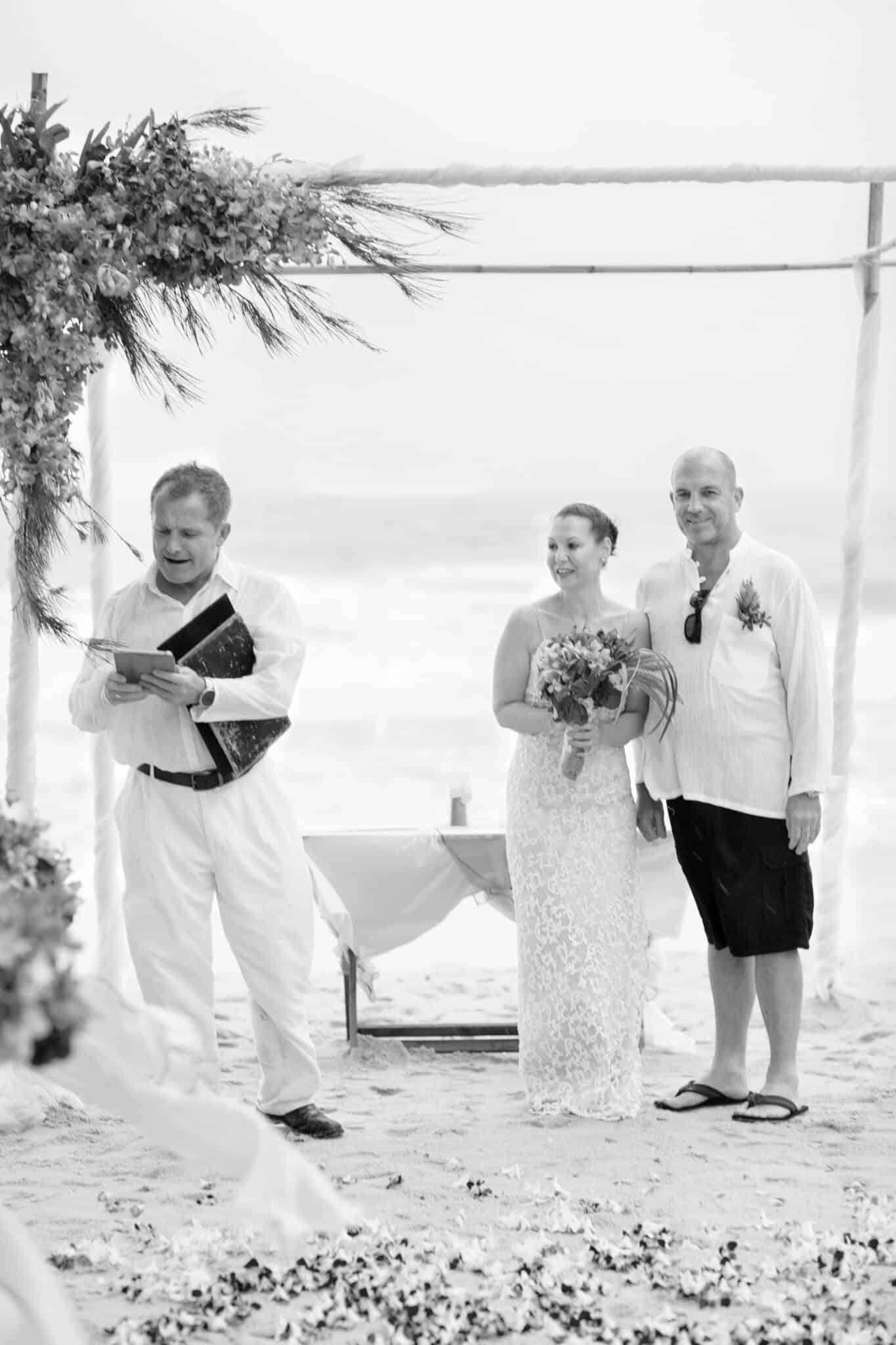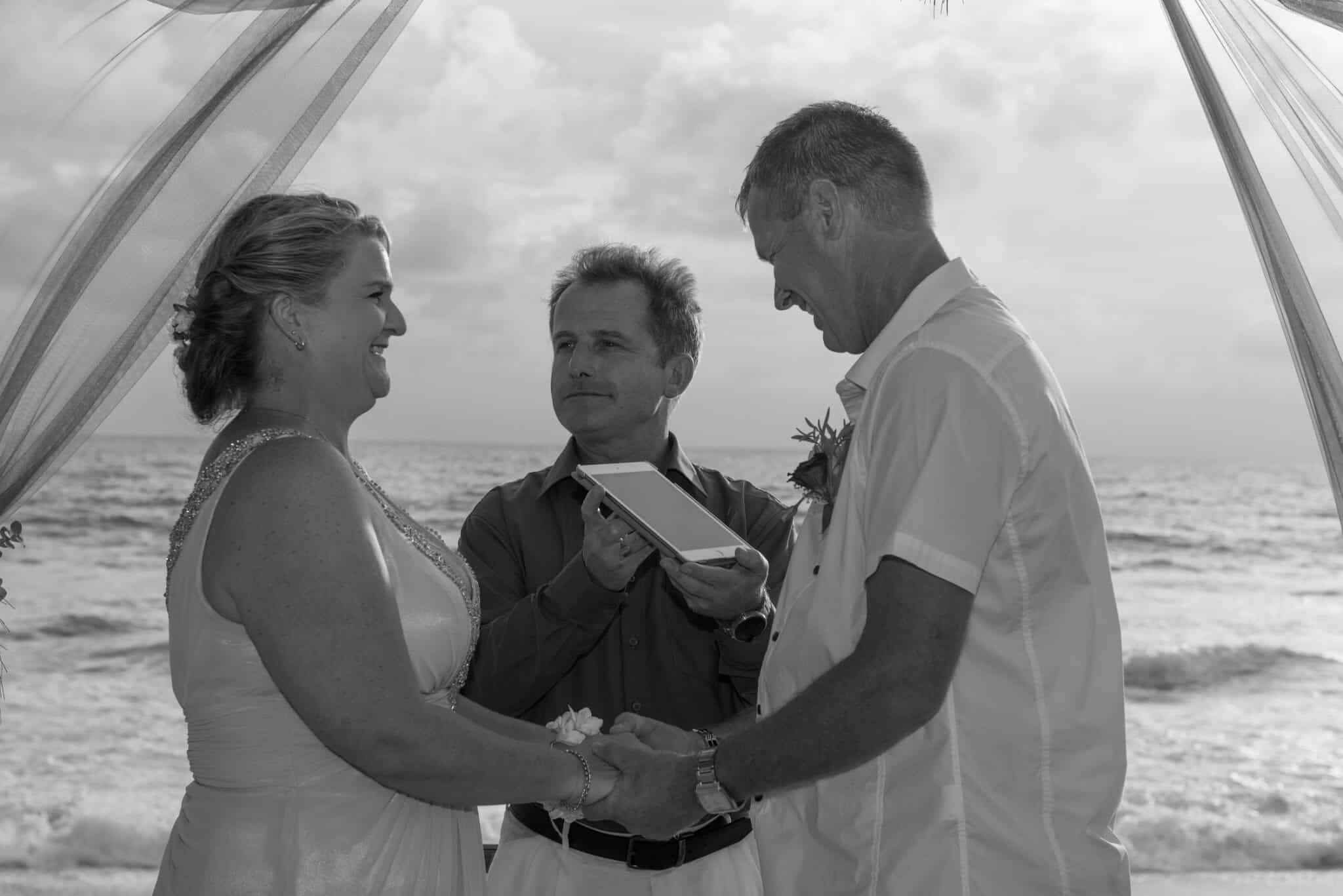Readings, rituals and rings all have a part to play when two people marry, giving you great scope to make the length and content of the ceremony your own. Just don’t go cramming everything in, writes Natasha Radmehr…
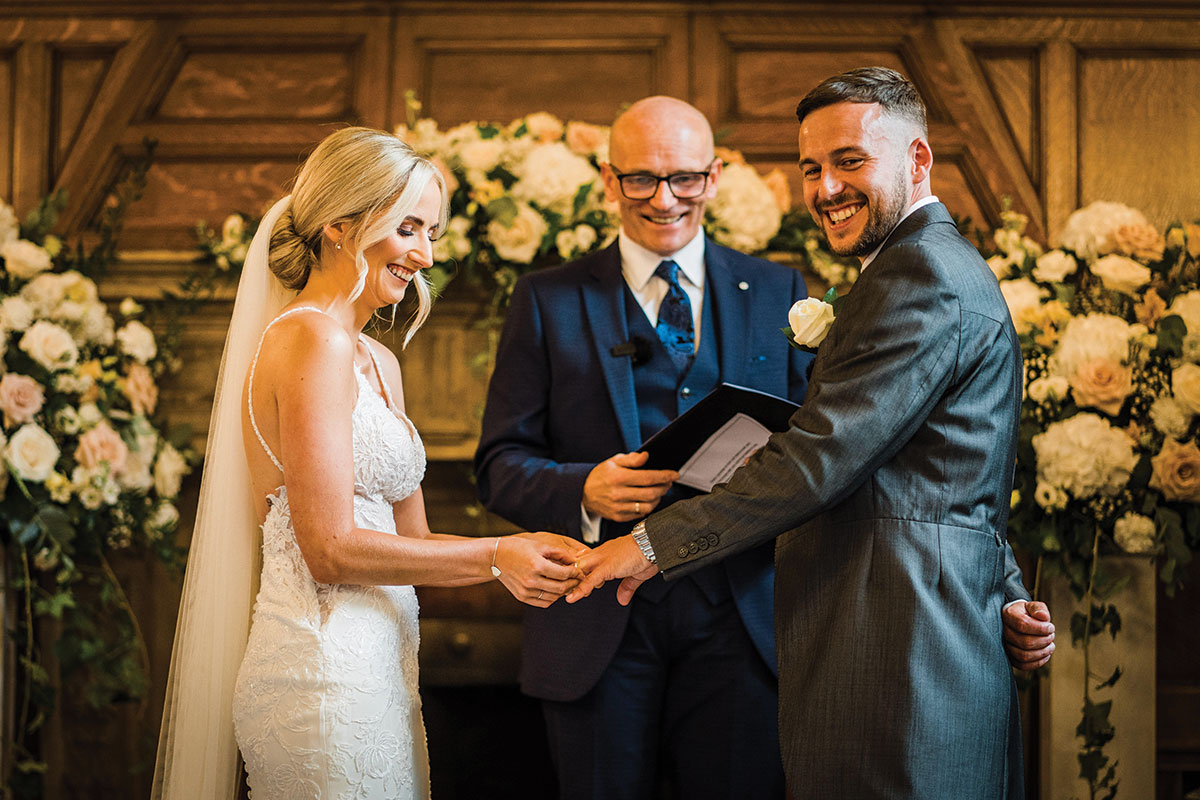
Timing is everything. Get it right and your life can change for the better in an instant –
after all, it played a pretty important role in bringing you and your partner together. Get it wrong, though, and you might see the domino effect in action as everything gets thrown off-kilter – we all know the havoc that can result from hitting the snooze button one time too many…
Without you even noticing, great timing has probably been the secret ingredient of the best weddings you’ve been to – the ones that still make you smile years later when you think back on them. Yes, they probably featured a combination of good vibes, great food, generous booze and a light smattering of succulent gossip. But it’s likely too there were no boring lulls or silent prayers for the best man to zip it and sit down. Everything flowed seamlessly.
As the first, and most important, part of your day, your ceremony sets the tone for the whole wedding and can even dictate how the rest of the day goes, so it’s worthwhile thinking not only about what it will consist of but how long it will last. If you’re planning a humanist, interfaith or civil wedding, you’ll have a fair bit of control over this, because you’re in charge of the vows, readings, music and rituals. But how do you figure out what to include, and is there such a thing as an ideal ceremony length? I chatted to some celebrants to find out.
Great lengths
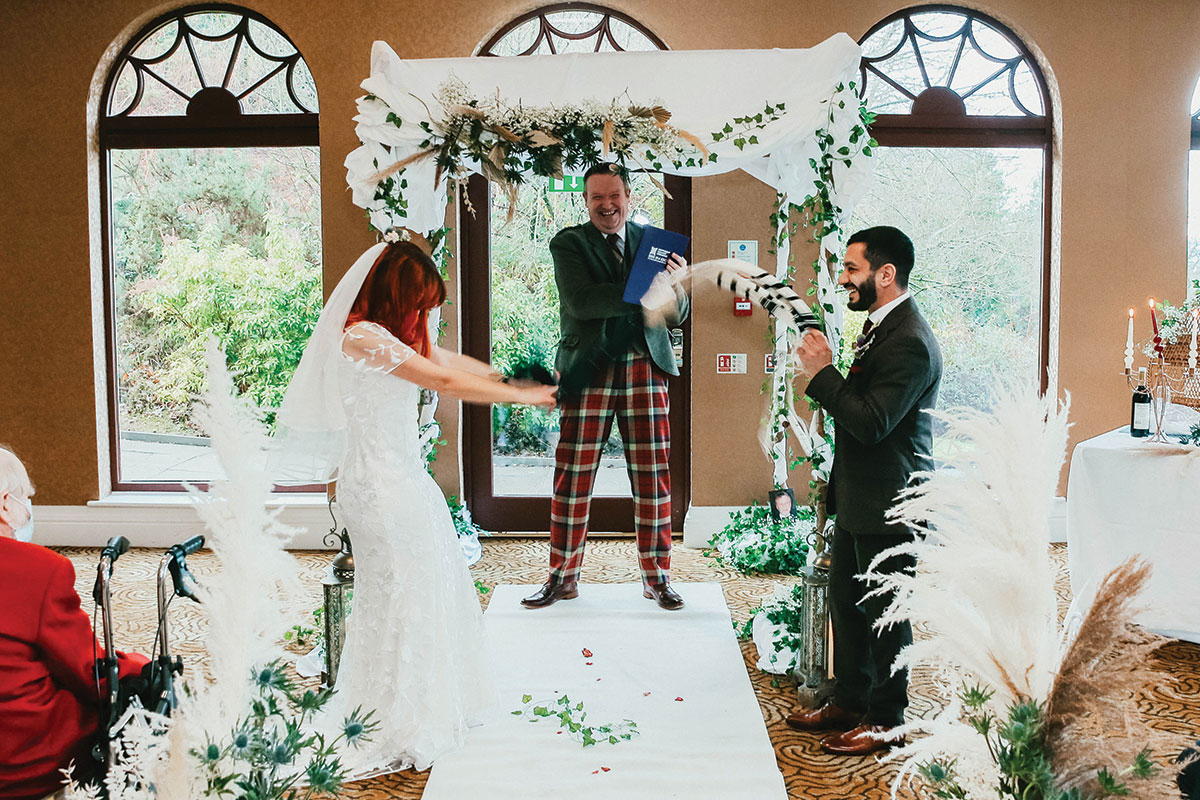
For a marriage to be legally binding in Scotland, there are only two essential spoken components in the ceremony: a declaration made by you and your partner that you accept one another in marriage, and a declaration by the celebrant that you’re officially married. This means that if you’re opting for a belief or civil ceremony, you could in theory have the ceremony done and dusted inside ten minutes.
Such a speedy session might suit you for any number of reasons. Perhaps you hate being the centre of attention, or the pair of you have been together a long time and don’t want a fuss. “I conducted a service last year where the groom had a severe speech impediment, and he just wanted the ceremony to be over with as quickly as possible,” recalls humanist celebrant Craig Flowers of Independent Humanist Ceremonies. “It was the shortest service I’ve ever conducted, and it didn’t necessarily show off all that we can do, but one thing I always impress upon our celebrants when training them is that it’s not about us – a humanist ceremony should always be about the couple and what they want.”
If you’ve decided on a humanist or interfaith ceremony, this personalised approach is probably what swung it for you. Maybe you’ve been to a pal’s wedding and loved how the readings they chose were such a good reflection of them, or you’ve sobbed your way through a set of self-written vows. Every humanist and interfaith celebrant I spoke to said their ceremonies are always guided by what each couple want, but that, generally speaking, 30 minutes is a good length to aim for. “You want something that’s long enough to feel significant, but not so long that your guests are wondering when they’re going to get a drink,” says interfaith celebrant Jane Patmore with a smile.
Format and structure
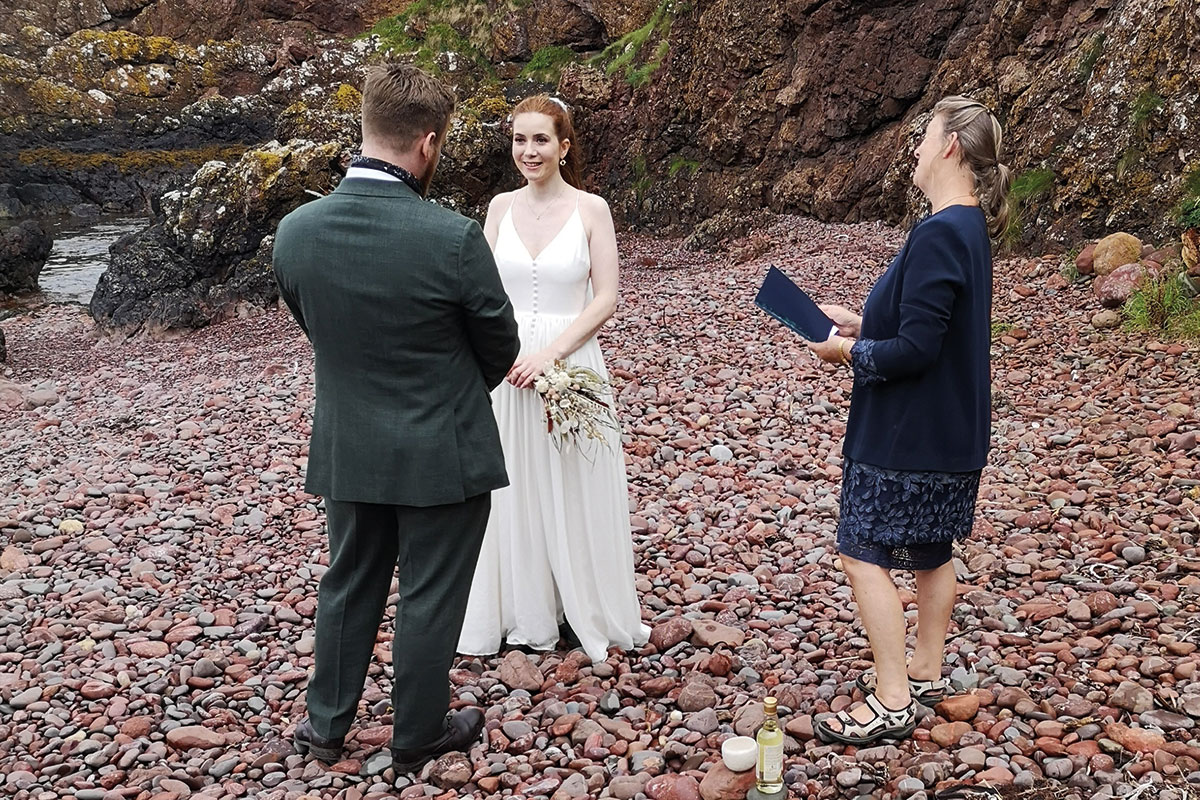
Typically, the ceremony will begin with the celebrant welcoming everyone and making an introduction. If you’ve opted for a humanist service, there will also be a brief bit of chat about what humanism is. “It’s not anything preachy,” reassures humanist celebrant George McLean of Fuze Ceremonies. “We’ll often mention why the couple opted for a humanist ceremony, using wording we’ve chatted about in advance. We’ll also introduce the wedding party and thank the person who has walked one of the party down the aisle. Then there will be a few words on marriage and love and what they mean. Of course, all celebrants have different ways of doing things, and each introduction is bespoke to the couple – but this is typically what will be included.”
There’s no set format, but many couples elect to have a reading or symbolic gesture after the introduction, before the celebrant talks a bit more about who you are as a couple – from how you met to why you love each other. Then you’ll make your vows and do the legal part, which you may want to combine with a ritual such as handfasting, followed by the signing of the marriage register.
Not into big public declarations of love? That’s no problem, says Jane Patmore. “I had a couple who each wrote a letter to one another and emailed it to me,” says Jane Patmore. “I then printed these off and they exchanged them on the wedding day to read later on.” Very sweet, and a clever way to keep things concise but meaningful.
Rituals and readings
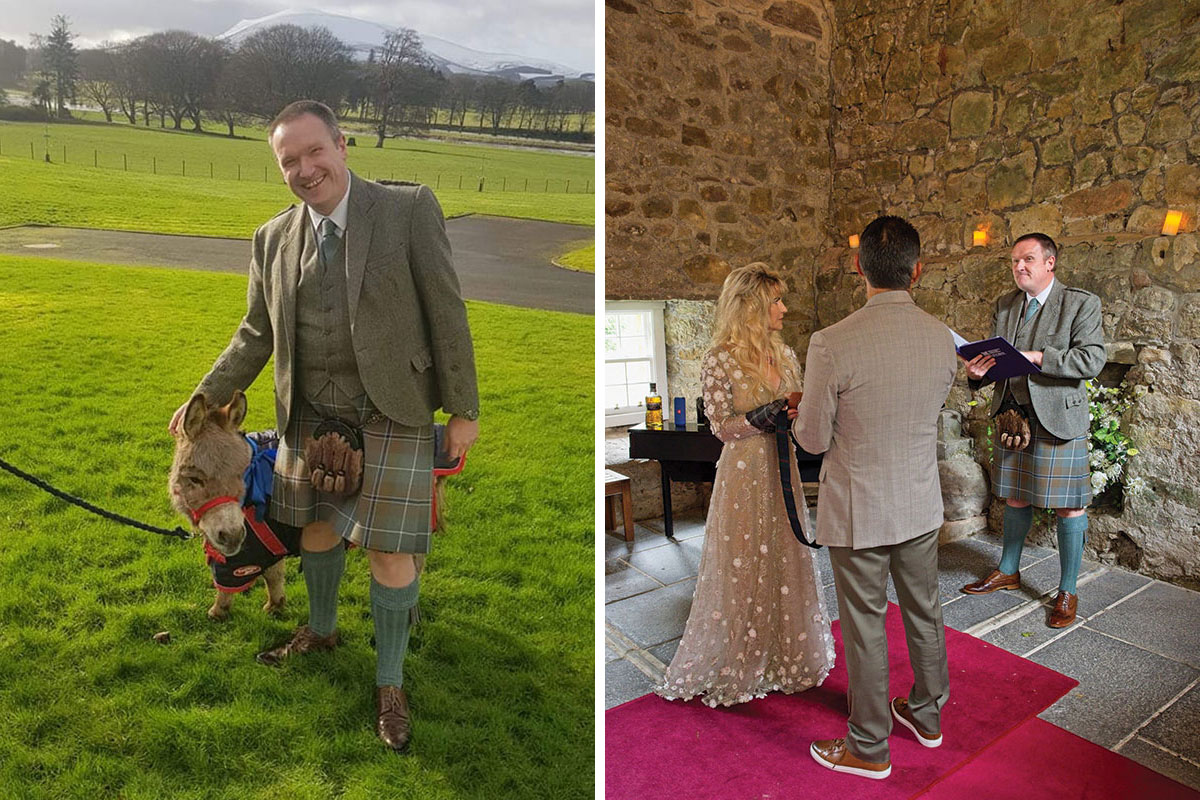
When you’re working out what to include in your ceremony, try not to be distracted by what other people have done – focus instead on what suits you. “I think the most important thing is that you’re not just adding things in for the sake of it, or because you feel you should,” says Jane Patmore. “Choose things that mean something to you, and that will ensure your ceremony has a nice flow.”
Craig Flowers says if you want to incorporate a few rituals, he might advise sticking with just one or two readings. “That said, if you’re having quite a simple ceremony with no rituals, you could have three readings if you wanted. Or, if you don’t want to have any of these added elements, I could expand on your story a bit more to make that section a little longer. There are always ways and means of finding a balance,” he points out.
“And if you want it to be longer or shorter than the typical ceremony, just make sure you inform the other suppliers such as your venue and photographer so they aren’t caught on the hop and can prepare accordingly.”
You might find yourself struggling to choose which rituals you like best. Before you get carried away trying to stuff them all in, Jane Patmore advises selecting ones that each serve a different purpose. “Handfasting is about the joining of two people or families, while something like drinking from the quaich symbolises a commitment to share everything that life brings to you,” she notes. “So having both of them can be nice as they mean different things – but a handfasting and a sand ceremony, for example, are more similar in meaning, and will then start to overlap.”
If there are lots of things you’d like to incorporate, there are time-efficient ways to do it. “One couple I married wanted to have three readers, which was going to make the ceremony a bit long,” recalls George McLean. “I suggested that during their handfasting, instead of me reading out the ‘blessing of the hand’, one of their loved ones could do it – that’s a cute way of keeping everyone engaged. This could be done during a quaich ceremony at the end too, with a friend or family member saying a few words.”
A ring warming, where guests pass the wedding rings around and think happy thoughts while doing so, is a lovely gesture – but if you have a huge guest list, it will likely take too long. “I had a couple with 160 guests who wanted to do a ring warming,” adds George. “We decided we’d only do it among the wedding party and the first two rows of guests as that’s where the closest relatives were. That was a nice compromise.”
You can be economical with your readings, too. Ideally, they should each last one or two minutes. “If they’re particularly long – for example, ‘Oh, The Places You’ll Go!’ by Dr Seuss or Bob Marley’s ‘Only Once In Your Life’ – I suggest you read them through and find three or four things that feel really meaningful to them, creating a suitable extract rather than reading the whole piece.” If the readings you like are a bit too long, your celebrant can advise on good ways to edit them down.
The logistics
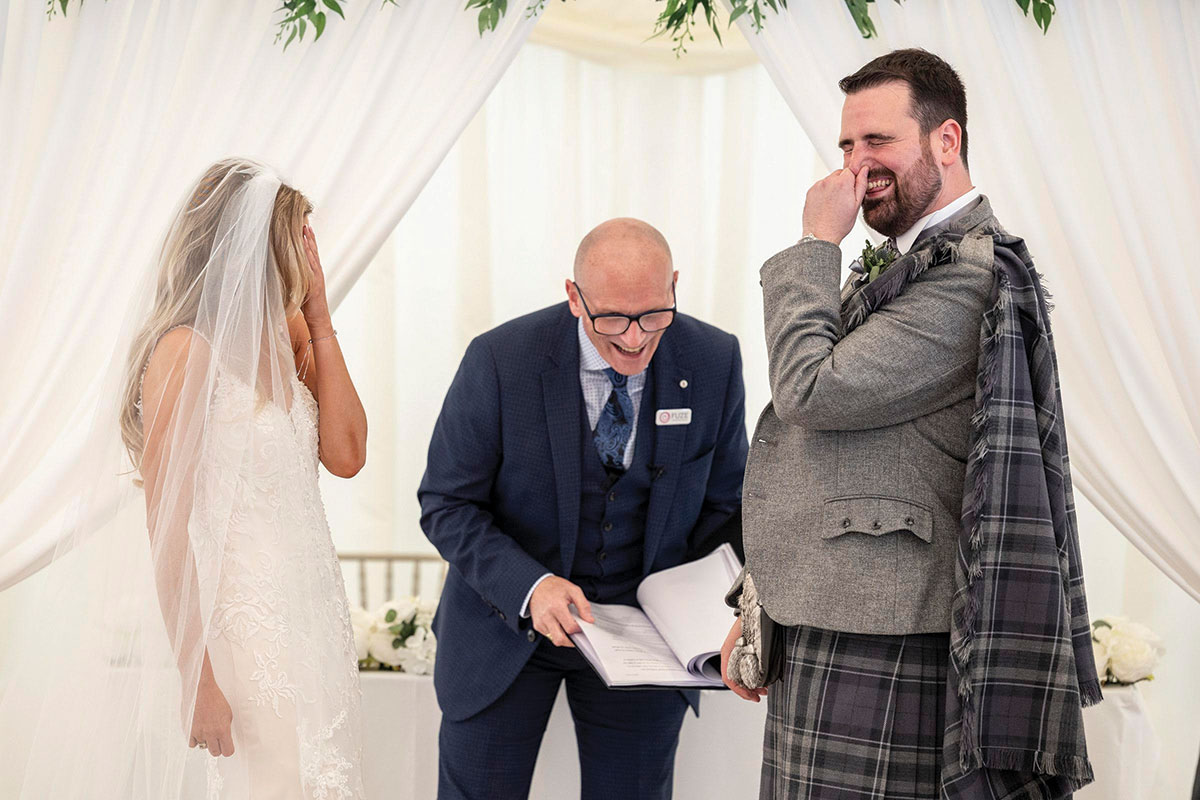
Most ceremonies start in the early afternoon, but this again comes down to personal preference – you could get married in the evening if you wanted. “But just remember that if you have it too late in the day in winter, it’ll be dark when you finish, which will impact your photos,” advises Craig Flowers.
The time at which you marry may also be guided by your venue and the way it likes to run things. “Most commonly, people get married at around 2pm,” says George McLean. “There will be a bit of wiggle room built into your schedule just in case parts run over, and I think it’s always best to do it a bit earlier in the day to allow for that.”
Although it has almost become an expected tradition for the bride to be late, try to avoid this if you can. “The beautiful personal ceremony is abridged, the photoshoot is reduced to the minimum, and the food and catering could be in chaos,” says Jane Patmore. Rock up on time and you’re setting the wheels in motion for a smooth-running day. But you have my express permission to hit that snooze button the next morning…
This content was originally published here.
